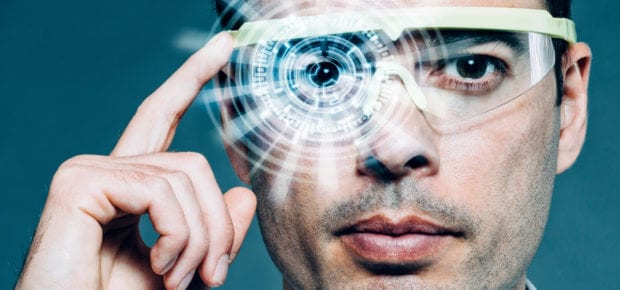December 22, 2015
With the holiday season in full swing and as the year winds down, tech enthusiasts are churning out their predictions for 2016, while preparing for their annual New Year-pilgrimage to Las Vegas, all in the name of the International Consumer Electronics Show (CES) — where more than 150,000 attendees gather every year to see the latest and greatest in technology.
We’ve kept a close eye on the tech landscape this past year, and came up with 8 trends we anticipate making a big splash at this year’s CES, based on what we saw at CES 2015.
- Intelligent Transportation: Driverless cars have made great strides in 2015, hitting California roads with automakers like Audi pre-empting CES with a strong presence at Web Summit in Dublin in November. Last year, Audi unveiled its driverless car concept, an A7 that debuted at CES by driving itself to the show all the way from from San Francisco. Other luxury automakers have made a splash in the autonomous market, including Mercedes Benz, whose F015 model is actually a rechargeable hydrogen fuel cell vehicle.
- Robotics: We’ve talked a lot about robotics and their importance in medicine, with a focus on nanorobotics and their role in surgical procedures. Based on what we saw in 2015 at CES, we anticipate seeing robotics take on a stronger presence in the wearables market. Last year, the ReWalk Personal System demonstrated the world’s first FDA-approved robotic exoskeleton. The ReWalk exoskeleton was designed to help paraplegics and stroke victims regain mobility. The system responds to the wearer’s intention to walk, and mimics a normal walking gait with a heel/toe strike sequence.
- Internet of Things (IoT): With autonomous automobiles, smart homes, and more, the IoT market is growing more and more sophisticated. At CES 2015, Logbar showcased a product that is simply called Ring, which bears the slogan “One Gesture, One Magic.” Smart home technology relies on the user to control everything within the home, usually through a smartphone app. Logbar’s Ring makes things a bit easier. Ring users are given the ability to operate appliances by simply waving their finger in the air, creating a more efficient way of connecting technology at home.
- Virtual Reality (VR): Oculus has made lots of headlines this year, and 2016 will mark its fourth year at CES. We anticipate that this, and other VR companies, will o make another big splash at CES in January, showcasing how this technology has the ability to impact various industries and affect our everyday lives.
- Gaming: Gaming isn’t just about the games and consoles, but also about the controllers. Mad Catz L.Y.N.X. 9 launched at CES 2015 and is a revolutionary gaming controller that can be used with either mobile or home systems running games. The L.Y.N.X. 9’s most impressive feature is its ability to split into three sections. The left side consists of the left analog stick, directional pads, and the left shoulder and trigger buttons. The right side has the right analog stick, the Y, A, B and X buttons, and the right shoulder and trigger buttons. The center houses the Bluetooth connection and the Start and Back buttons. We anticipate the gaming focus for 2016 to represent this shift – where the accessories are just as much a focus as the gaming technology itself.
- Unmanned Systems: Drones have been a tech buzzword this past year, and in 2015, we saw drones for all purposes — drones to help you take the perfect selfie, drones that fly themselves and drones that follow you by hooking up with your smartphone. Drones can do more than just capture a good selfie; they can be flying computers. The DJI Inspire 1 camera drone had an impressive launch last year, touting 4K resolution and the ability to click videos and pictures from an aerial vantage point. The DJI Inspire 1 technology allows software developers to use the software development kit (SDK) to create mobile applications that control how the drone’s camera, gimbal and more interact in the sky.
- 3D Printing: 3D printing, much like VR, has made its mark across industries and is undoubtedly here to stay. More than 30 innovative companies showcased their latest advancements in 3D printing technology at CES 2015. Mcor SDL paper-based 3D printing technology is one of the most unique and best suited in providing wide access to low-cost, accurate and realistic color, eco-friendly, and professional-quality 3D printing. Mcor 3D printers create complex, durable and stable physical 3D models from standard sheets of copy paper. The 3D printed models can be tapped, threaded, hinged, made water resistant and flexible. Examples range from healthcare professionals creating anatomical models to improve surgical outcomes, including plastic and reconstructive sculptor to create physical three-dimensional ‘before’ and ‘after’ images or even geographic information systems professionals creating accurate models of 3D landscapes mapping the earth’s surface which enables people to more easily see, and understand patterns and relationships as it relates to the geographic landscapes.
- Television: TVs have always come in different shapes and sizes, but now they’re bendable. Samsung’s massive 105-Inch UN105S9B SUHD TV can go from flat to curved at the touch of a button. It utilizes small servos behind the screen to curve the edges in, and back out again, to the whim of a remote control thumb.





 Meaningful Momentum or Running in Place?
Meaningful Momentum or Running in Place? AI Through Our Ages
AI Through Our Ages Liquid Infrastructure: Our Planet's Most Precious Resource
Liquid Infrastructure: Our Planet's Most Precious Resource The Impact of Technology in 2025
The Impact of Technology in 2025 Quantum and AI: Safeguards or Threats to Cybersecurity?
Quantum and AI: Safeguards or Threats to Cybersecurity? Why AI Can't Live Without Us
Why AI Can't Live Without Us Bits, Bytes, Buildings and Bridges: Digital-Driven Infrastructure
Bits, Bytes, Buildings and Bridges: Digital-Driven Infrastructure Impact of Technology in 2024
Impact of Technology in 2024 Emerging AI Cybersecurity Challenges and Solutions
Emerging AI Cybersecurity Challenges and Solutions The Skies are Unlimited
The Skies are Unlimited Smart Cities 2030: How Tech is Reshaping Urbanscapes
Smart Cities 2030: How Tech is Reshaping Urbanscapes Impact of Technology 2023
Impact of Technology 2023 Cybersecurity for Life-Changing Innovations
Cybersecurity for Life-Changing Innovations Smarter Wearables Healthier Life
Smarter Wearables Healthier Life Infrastructure In Motion
Infrastructure In Motion The Impact of Tech in 2022 and Beyond
The Impact of Tech in 2022 and Beyond Cybersecurity, Technology and Protecting Our World
Cybersecurity, Technology and Protecting Our World How Technology Helps us Understand Our Health and Wellness
How Technology Helps us Understand Our Health and Wellness The Resilience of Humanity
The Resilience of Humanity Harnessing and Sustaining our Natural Resources
Harnessing and Sustaining our Natural Resources Creating Healthy Spaces Through Technology
Creating Healthy Spaces Through Technology Exceptional Infrastructure Challenges, Technology and Humanity
Exceptional Infrastructure Challenges, Technology and Humanity The Global Impact of IEEE's 802 Standards
The Global Impact of IEEE's 802 Standards Scenes of our Cyber Lives: The Security Threats and Technology Solutions Protecting Us
Scenes of our Cyber Lives: The Security Threats and Technology Solutions Protecting Us How Millennial Parents are Embracing Health and Wellness Technologies for Their Generation Alpha Kids
How Millennial Parents are Embracing Health and Wellness Technologies for Their Generation Alpha Kids Space Exploration, Technology and Our Lives
Space Exploration, Technology and Our Lives Global Innovation and the Environment
Global Innovation and the Environment How Technology, Privacy and Security are Changing Each Other (And Us)
How Technology, Privacy and Security are Changing Each Other (And Us) Find us in booth 31506, LVCC South Hall 3 and experience the Technology Moon Walk
Find us in booth 31506, LVCC South Hall 3 and experience the Technology Moon Walk Virtual and Mixed Reality
Virtual and Mixed Reality How Robots are Improving our Health
How Robots are Improving our Health IEEE Experts and the Robots They are Teaching
IEEE Experts and the Robots They are Teaching See how millennial parents around the world see AI impacting the lives of their tech-infused offspring
See how millennial parents around the world see AI impacting the lives of their tech-infused offspring Take the journey from farm to table and learn how IoT will help us reach the rising demand for food production
Take the journey from farm to table and learn how IoT will help us reach the rising demand for food production Watch technical experts discuss the latest cyber threats
Watch technical experts discuss the latest cyber threats Explore how researchers, teachers, explorers, healthcare and medical professionals use immersive technologies
Explore how researchers, teachers, explorers, healthcare and medical professionals use immersive technologies Follow the timeline to see how Generation AI will be impacted by technology
Follow the timeline to see how Generation AI will be impacted by technology Learn how your IoT data can be used by experiencing a day in a connected life
Learn how your IoT data can be used by experiencing a day in a connected life Listen to technical experts discuss the biggest security threats today
Listen to technical experts discuss the biggest security threats today See how tech has influenced and evolved with the Games
See how tech has influenced and evolved with the Games Enter our virtual home to explore the IoT (Internet of Things) technologies
Enter our virtual home to explore the IoT (Internet of Things) technologies Explore an interactive map showcasing exciting innovations in robotics
Explore an interactive map showcasing exciting innovations in robotics Interactively explore A.I. in recent Hollywood movies
Interactively explore A.I. in recent Hollywood movies Get immersed in technologies that will improve patients' lives
Get immersed in technologies that will improve patients' lives